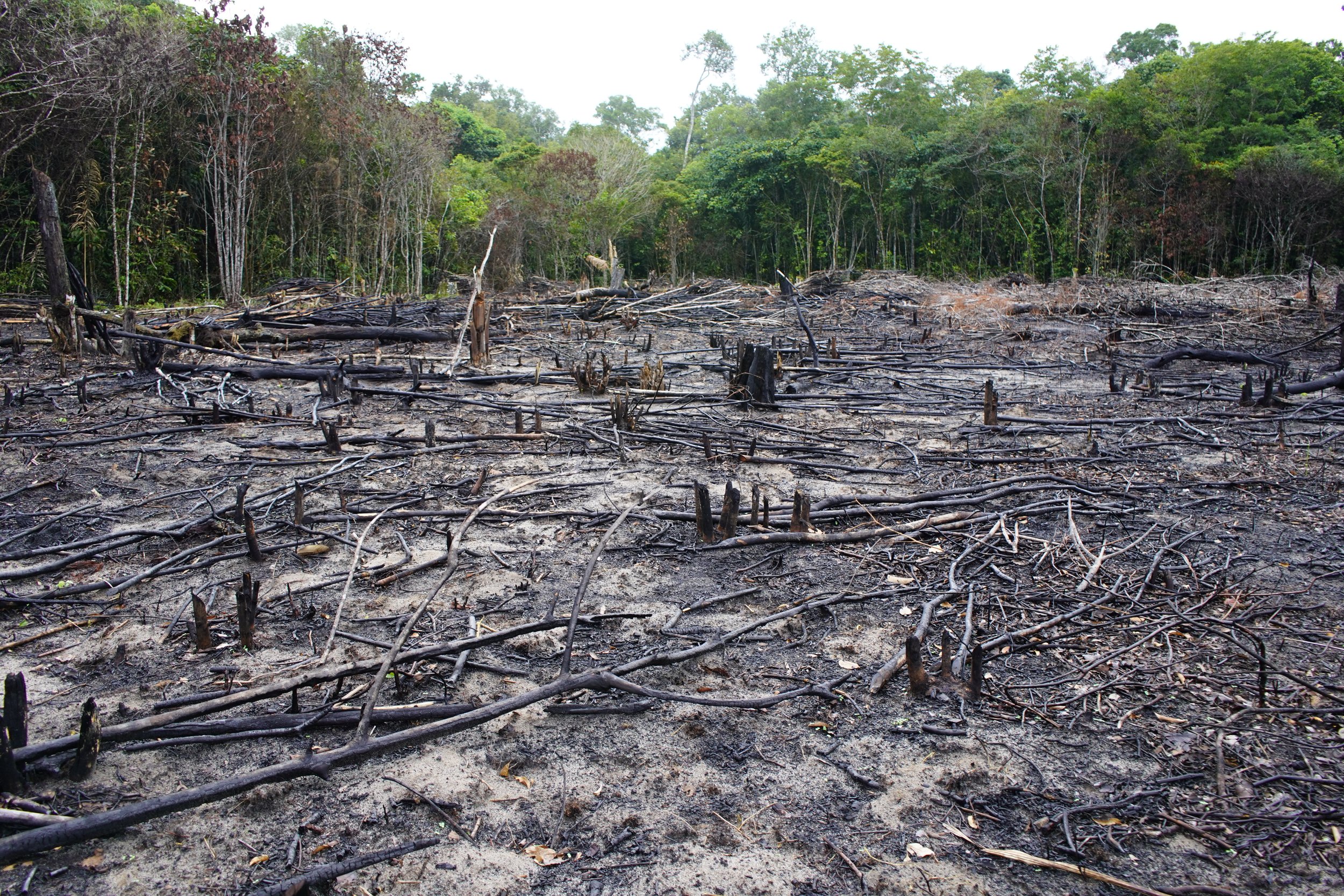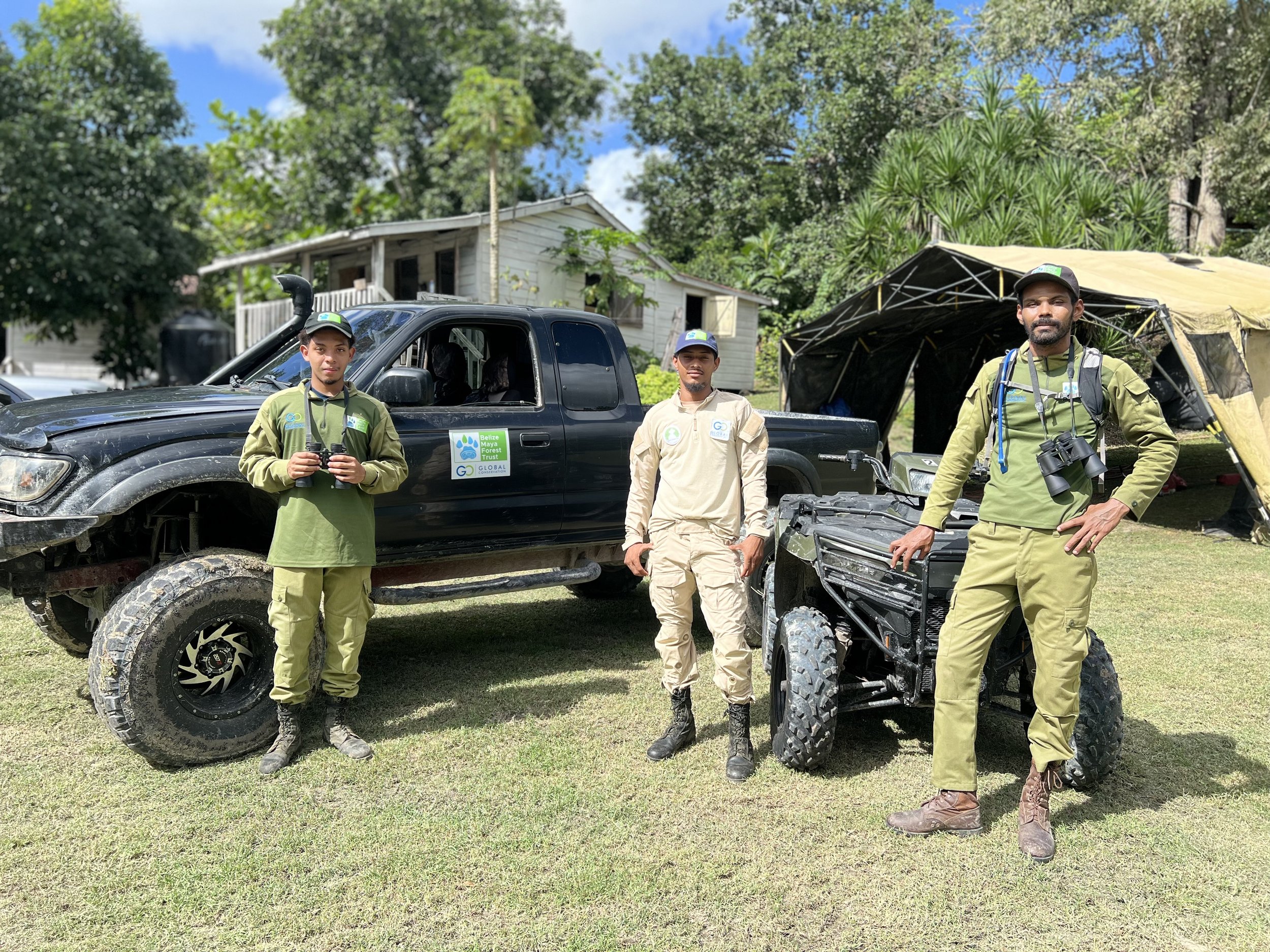Belize Maya Forest Protection: 2023-24 Progress
There are more than 20 Mayan pyramids that cover the Selva Maya forests, some of which can be visited by tourists.
Introduction to the Belize Maya Forest Trust
The Belize Maya Forest (BMF) is a biodiverse and ecologically important area that stretches from the Cayo to Orange Walk Districts of Belize. It covers 240,000 acres of land, making it one of the largest remaining expanses of tropical forest in Belize. This lush forest is characterized by its towering trees, vibrant flora, and abundant wildlife. It serves as a haven for numerous iconic and endangered species, including jaguars, tapirs, white-lipped peccaries, and howler monkeys. The Belize Maya Forest's unique geographical location and diverse ecosystems, ranging from riverine habitats to its beautiful Cara Blanca cenotes and mountainous terrain, contribute to its biodiversity.
Additionally, this forest holds immense cultural significance as it contains many ancient Mayan sites dating back to over 3000 years ago. The preservation and sustainable management of the Belize Maya Forest are crucial not only for conservation but also for supporting local communities within the landscape and preserving Belize’s cultural heritage.
In 2021, a consortium of more than a dozen conservation organizations purchased a critical piece of land: the Belize Maya Forest, a 96,000-hectare linchpin in Central America’s pristine Selva Maya. This purchase likely prevented the clearing of this former forestry concession for industrial-scale agriculture.
The Rio Bravo Conservation and Management Area (RBCMA), under protection since 1995, borders the Belize Maya Forest. Together, these two pieces of land, which total almost 10% of Belize’s total land area, make up the Greater Belize Maya Forest. This reserve provides landscape protection across 521,392 acres (211,000 hectares) of savanna, wetlands, and tropical rainforest.
Its biodiversity is astonishing: the forest hosts 200 species of trees, 390 species of birds, and 80 species of mammals, including one of the world’s healthiest populations of jaguars and endangered wildlife like the Yucatán black howler monkey (Alouatta pigra).
The Selva Maya lies at the intersection of Belize, Guatemala, and Mexico. Its 15-million-hectare expanse is one of the largest and best protected forests in the world. Keeping this forest intact and maintaining corridors between its pieces is of crucial importance for the future of its wildlife and for fighting global climate change. Global Conservation is also working in another part of the Selva Maya: Mirador National Park in Guatemala.
Based on Landsat data gathered from 2000 to 2023, this map illustrates the development of forest loss in a portion of the Maya Biosphere Reserve. More recent losses appear yellow, whereas older losses seem purple. The graphic is based on information about the loss of forest cover gathered by Landsat satellites and processed by the University of Maryland's Global Land Analysis and Discovery (GLAD) lab.
Devastating Damage Shrinks Selva Maya
Across portions of southeastern Mexico, northern Guatemala, and Belize, the Selva Maya, also known as the Maya Forest, covers an area of 150,000 square kilometers (60,000 square miles), roughly the size of the U.S. state of Illinois. Second only to the Amazon, it's Mesoamerica's largest tropical rainforest. The forest, which is home to hundreds of thousands of people, thousands of plant and animal species, and many archeological sites, is rich in biodiversity and human history.
But the Selva Maya is evolving. Similar to the Amazon, this forest has seen significant clearing in recent decades, according to satellite data. The two MODIS (Moderate Resolution Imaging Spectroradiometer) satellite photos above show the magnitude of the loss of forest cover.
In Petén, a department in northern Guatemala, west of Belize, the loss of forests is especially noticeable. Researchers at the University of Maryland evaluated data from the Landsat Program, which revealed that between 2001 and 2023, Guatemala lost 23 percent of its forest cover, while Petén lost 33 percent.
Oil palm, the most widely consumed vegetable oil in the world and a component of many packaged goods, has grown especially quickly in Guatemala. The area dedicated to oil palms increased from about 30 square kilometers (12 square miles) in 2001 to 860 square kilometers (332 square miles) in 2017, according to an analysis of Landsat imagery. Southeast Petén was home to a large portion of the new oil palm farms.
The Mayan Mask Temple at Lamanai in Belize.
Conservation Goals and Vision
BMFT’s mission is rooted in sustainability, resilience, and biodiversity protection. Its key goals are:
1. Fire Prevention and Management:
Prevent wildfires within the BMF and improve fire strategies by 2025.
2. Wildlife and Habitat Conservation:
Maintain stable predator-prey populations and restore forest health (connectivity, biodiversity, and nutrient cycling) by 2027.
3. Aquatic System Restoration:
By 2027, reduce invasive species like the armored catfish and tackle pollution in Cara Blanca Pools and Black Creek.
4. Infrastructure and Capacity Building:
Strengthen patrol capacity, surveillance systems, and community engagement programs to ensure long-term sustainability.
Overall Threats to the Belize Maya Forest
The principal threats to the Belize Maya Forest include illegal logging, illegal hunting and fishing, wildfires, agricultural encroachment, and illegal crop cultivation. Additionally, illegal activities, particularly illegal hunting, necessitate immediate attention to maintain the integrity of the reserve.
Currently, the major limitations for effectively extending the protection program are the inadequate number of rangers, the need for a vehicle/transportation, limited ranger gear and equipment, and the lack of appropriate communication and surveillance technology.
Fragmentation threatens the Selva Maya, of which the Greater Belize Maya Forest is just one piece on a larger scale. A proposed Maya Forest Corridor, for example, would connect the Greater Belize Maya Forest with the Maya Mountains Massif in southern Belize and the Selva Maya in Guatemala and Mexico, consolidating a 15.4-million-hectare area. That would make this the largest rainforest preserve north of the Amazon and the largest contiguous protected area in Central America. The corridor has already lost more than 65% of its forest cover due to sugarcane and other agricultural expansion, at a rate almost four times the national average. Protecting this corridor would help preserve the integrity of the Greater Belize Maya Forest and be another major win for the Selva Maya’s preservation.
Protecting the Belize Maya Forest
Global Conservation dedicates itself to achieving "No Cut, No Kill" protection in the Belize Maya Forest through our Global Park Defense program. Global Park Defense increases ranger patrol and park protection effectiveness in critical ecosystems. GPD is a scalable system with technology and training tailored to each park, dramatically increasing the effectiveness of rangers and park authorities to protect their world heritage.
The Establishment and Mission of the Belize Maya Forest Trust
Established as a non-governmental organization, the Belize Maya Forest Trust (BMFT) aims to conserve and protect the Belize Maya Forest in perpetuity for the people and government of Belize. Our mission is to showcase a model of a healthy, biodiverse forest that is both locally relevant and globally recognized, safeguarded by and for all Belizeans. We also aim to ensure the long-term sustainability of the forest by promoting biodiversity conservation, community engagement, and sustainable development initiatives.
The Belize Maya Forest Trust rangers in the gear supplied by Global Conservation.
Hire of BMFT Rangers
Belize Maya Forest Trust Rangers play a crucial role in safeguarding the Belize Maya Forest. As the guardians of this precious ecosystem, their responsibilities include patrolling the forest to prevent illegal activities such as logging, hunting, and other encroachment. They also monitor wildlife populations, assist researchers, fight wildfires, and occasionally engage in community outreach and education initiatives along with our BMFT Community Outreach and Stewards Coordinator and our Restoration and Regenerative Agriculture Coordinator.
BMFT was able to hire additional Rangers under this project budget line, which not only bolstered our patrolling and enforcement efforts but also covered the salaries, additional benefits, and salaries for over 5 Rangers. This also gave us the flexibility to recruit two temporary rangers, enabling us to increase our workforce during peak seasons or in response to specific events. Their temporary status allows them to provide much-needed support without the long-term commitment associated with permanent employees. Increasing the number of rangers led to enhanced coverage and surveillance of the Belize Maya Forest, helping to prevent illegal activities and monitor changes in biodiversity more effectively. This is evident in our smart patrol report, which shows 158 active patrols by day and night for the previous year, 2022-2023, compared to 320 active patrols for 2023-2024 during the project period. The ranger team was also able to succefully make five interdictions whereby persons identified and caught were banned from entering and working near the reserve, their hunting licenses for neighboring lands were revoked, and/or they were given strict warnings.
Part of GC’s funding went towards the much-needed addition of patrol trucks.
In support of the ranger team, BMFT also received multiple donations of fire equipment, patrol equipment, uniforms, and satellite communicators from Global Conservation.
What is also important to note is that rangers have been able to significantly improve fire management strategies, leading to the prevention and control of destructive fires. During the project period, rangers responded to a total of fifty-five fire incidents within BMFT boundaries and over twenty other incidents in communities surrounding the reserve. In 2023 we lost approximately 1022 acres to wildfires, and in 2024 fires affected approximately 386 acres. Through continuous training, research, and collaboration with other agencies and stakeholders, BMFT rangers will continue to enhance their skills in wildfire detection, suppression techniques, and prescribed burn practices. For the remainder of the project, we intend to implement proactive measures such as fuel reduction activities, creating defensible space zones, and developing comprehensive fire management plans to effectively mitigate the threat of wildfires in vulnerable areas. Our ability to properly equip the team on the ground and ensure their training to respond to all activities within the reserve will remain the key to our success.
Purchase of ATVs
Through our partnership, we acquired two (2) all-terrain vehicles (ATVs) to enhance our patrolling efforts in remote areas. This strategic acquisition allowed us to overcome the challenges posed by difficult terrain, enabling our team of dedicated rangers to reach even the most isolated areas within BMF. Equipping our workforce with ATVs ensured efficient and effective surveillance, enabling us to swiftly respond to any signs of environmental threats or illegal activities, significantly improve patrolling efforts, and deter human incursions in our hot zones. Not only did these vehicles improve accessibility, but they also significantly reduced response time for emergencies or wildlife rescues. Just recently, during the peak of the fire season, the ATVs proved to be very effective at combating wildfires by efficiently providing the ranger team with a means of transporting water in areas that were not accessible by other vehicles.
Upgraded Southern BMFT Ranger Facilities
Upgrading the Belize Maya Forest Trust ranger facilities was not only essential but also imperative in ensuring the effectiveness of the ranger team. By improving their facilities and establishing headquarters, BMFT was able to provide its rangers with better living conditions and amenities to support their important duties more effectively. Upgrades included improved communication systems, upgraded living quarters for the rangers stationed at the Yalbac Gate, and establishing a central location, or HQ, to deploy to hot zones and for briefings. We now host other BMFT staff at this central location to ensure streamlined operations, effective communication, and coordination with our protection team. Additionally, investing in infrastructure upgrades significantly enhanced operational efficiency and overall morale among staff members. Ultimately, upgrading the ranger facilities demonstrated a commitment to safeguarding Belize's biodiversity and ecosystems for future generations while empowering those on the frontlines of conservation efforts. Under this line, we were able to relocate an entire camp to a more suitable, strategic location for operational efficiency. The previous landowners once used this camp, but they abandoned it at a location not strategically suited for BMFT operations. We were then able to equip the housing from the camp with all the necessary amenities to make it suitable for the ranger team.
Challenges: Initially, our goal was to enhance the current ranger facilities. However, due to the situation we inherited and the non-organizational nature of two (2) current ranger bases, we deemed it impractical to invest heavily in these facilities. Therefore, we chose to relocate the old camp to the existing ranger bases. We continue to need a permanent base within the Belize Maya Forest, but this will require an investment of at least US$350k based on preliminary estimates.
BMFT rangers equipped with uniforms sponsored by GC, along with a new truck and ATV that were both purchased under the grant.
Provision of Patrol Support
The unwavering support of BMFT rangers, crucial for their livelihood, enabled them to concentrate on achieving our conservation and enforcement efforts. This partnership is a shining example of teamwork and dedication, proving that with the right support, even the most daunting challenges can be overcome.
Under this line, the Belize Maya Forest Trust was able to provide direct and ongoing support to rangers, including:
Salary support through a food allowance to ensure normal work cycles, • Essential personal equipment for patrols, administration, and other fieldwork. • Funds for fuel support—encouraging rangers to patrol more often.
Support for other daily activities.
Despite challenges, the implementation of patrol support has led to a significant decrease in illegal activities within the Belize Maya Forest Trust. Patrol teams' dedication and local communities' support in safeguarding the forest are responsible for this success. It is essential that we recognize the importance of empowering rangers through effective training, equipment, and logistical support to ensure the long-term survival of our protected areas.
Installation of a Communications Satellite
The Belize Maya Forest Trust has made the strategic decision to postpone installing satellite communications until the release of Starlink, due in January 2025 in Belize. Both economic and technological considerations fuel this delay. By leveraging Starlink, the Trust aims to access high-speed internet connectivity at a lower cost, thus optimizing our budget allocation for other critical conservation efforts within the Maya Forest. Furthermore, Starlink promises greater reliability and faster speeds compared to traditional satellite internet services currently available in Belize. This calculated move demonstrates the Trust's commitment to adopting cutting-edge technologies that can enhance operational efficiency and effectiveness in their conservation endeavors while maximizing resources for achieving long-term sustainability goals.
Why Starlink? It has the potential to revolutionize conservation efforts around the world. With its high-speed, low-latency internet connectivity in remote and rural areas, researchers and conservationists can utilize real-time data collection and monitoring to track endangered species, deforestation patterns, and climate change impacts. This technology allows for more efficient communication between field teams, scientists, and HQ on a local and global scale. In addition, Starlink can support wildlife tracking devices and sensors for better understanding of animal behavior and habitat usage.
Challenges: Service providers in Belize are known to charge extremely high prices for satellite internet due to a variety of factors. The cost of launching and maintaining satellites, as well as the limited number of providers offering this technology in the region, contribute to the high prices. Additionally, the lack of infrastructure and competition in the market further drives up costs for consumers.
Conclusion: A Future Worth Fighting For
Looking ahead, BMFT is committed to:
Scaling Up Patrols: Expanding operations with seasonal rangers to tackle peak threats.
Improving Water Systems: Restoring riparian zones and addressing pollution in Cara Blanca Pools and Black Creek.
Tackling Invasive Species: Developing strategies to reduce armored catfish populations by 2027.
Expanding Infrastructure: Building a permanent ranger base to strengthen enforcement capacity.
Enhancing Fire Management: Training teams in advanced fire suppression techniques and equipping vehicles for rapid response.
BMFT will continue to work tirelessly to defend the Belize Maya Forest, not just as a habitat for wildlife, but as a lifeline for climate stability, a source of clean water, and a home for cultural heritage.

























